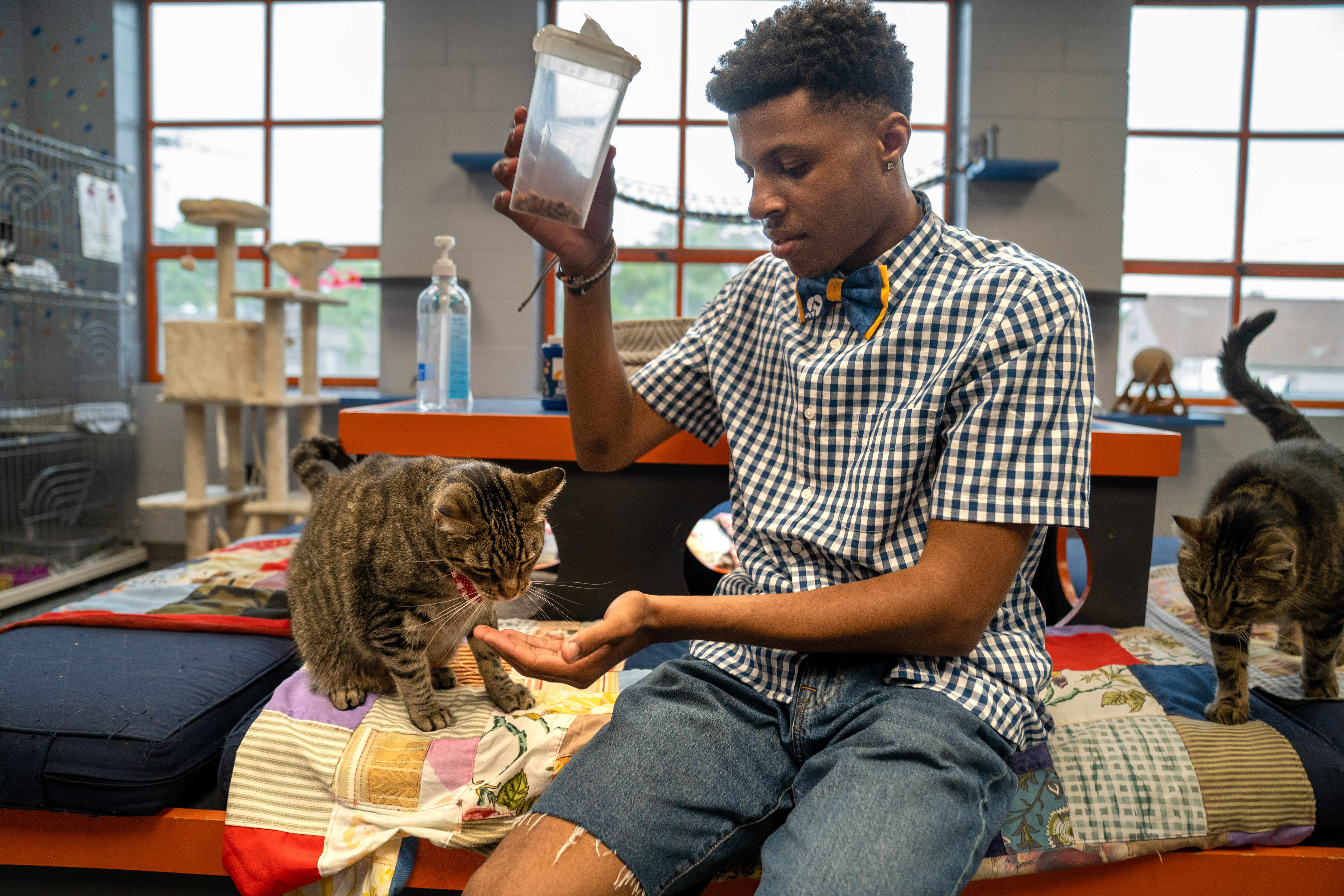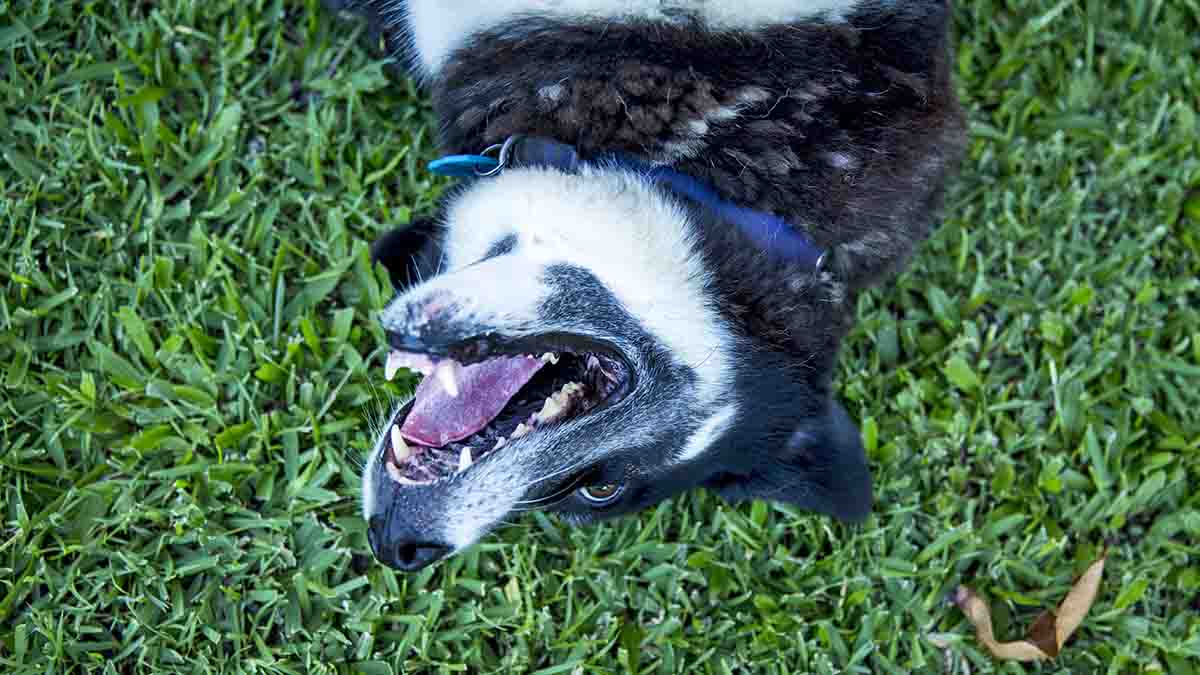Kaine is a big, buoyant dog looking for a home. But lately, he's spending a lot of time at the office.
Animal shelters around the U.S. are bursting at the seams amid the rising cost of living, so the gray and white 7-year-old has been staying in a worker's office at the Mohawk Hudson Humane Society while awaiting adoption.
The shelter near Albany, New York, is “beyond full,” said CEO Ashley Jeffrey Bouck. That means Kaine — along with his crate, dog bed and chewy toys — has to share space with a staffer, a desk and file cabinets.
“He is one of our 'office fosters' as we're calling it," Bouck said as she visited Kaine's office recently. “They are here all day and all night. They are not going into a kennel because we don’t have a kennel for them to go into.”
Get Philly local news, weather forecasts, sports and entertainment stories to your inbox. Sign up for NBC Philadelphia newsletters.
Animal rescuers of 2023
While shelters look for help, these stories of adoptions shine a light on pet goodness done across America.
The number of animals entering shelters began to climb in 2021, after a pandemic-related dip. Adoptions haven’t kept pace with the influx of pets — especially larger dogs like Kaine — creating a snowballing population problem for many shelters. Shelter Animals Count, a national database of shelter statistics, estimates that the U.S. shelter population grew by nearly a quarter-million animals in 2023.
Shelter operators say they’re in crisis mode as they try to reduce the kennel crush.
The issue is sometimes blamed on owners abandoning “pandemic puppies” purchased during the COVID-19 lockdowns. But advocates and operators say the evidence actually points to economic factors such as higher pet care costs and housing insecurity.
“The economy right now is really challenging for a lot of families,” said Kim Alboum of the Bissell Pet Foundation, a national animal welfare organization. “And with the housing crisis, people are losing their homes and are having to downsize or move in with others. And this is a recipe for disaster for people that have larger dogs.”
Overcrowded shelters with limited space are more of a dog problem than a cat problem, advocates say. Mohawk Hudson, for instance, has a lot of pit bulls, mastiffs and cane corsos.
Some people can no longer afford to care for their pets, particularly when it comes to the rising cost of veterinarian services. Advocates say a shortage of veterinarians has exacerbated the problem by reducing access to care.
North of New York City, Ulster County SPCA executive director Gina Carbonari said she’s noticed more people coming in to their pet food pantry to ask for dog food in recent months.
The tumultuous housing market has added to the problem. Bouck said that when evictions increase, so too does the number of stray animals. When renters move into new, more affordable housing, they often encounter restrictions on pets, with larger dogs and pit bulls more likely to be barred.
“So you have to make a choice now,” Carbonari said, ”‘Well, do I have housing? Or am I going to be homeless with my dog?‘’’
In Ohio, the number of animals surrendered to the Cleveland Animal Protective League due to housing or financial challenges jumped by 56% this year to 388. That includes people who can’t afford the care, have a conflict with their landlord, are moving or have no home. The number of stray cats and kittens brought in by good Samaritans also has increased significantly.
Advocates say they're seeing shelters that have not had to euthanize animals recently rely again on the practice to help control overpopulation. Some cities have required owners to spay or neuter their pets, but often such policies aren't enforced.
Around the country, shelters and advocates are working to reduce intakes and encourage more adoptions.
That includes expanding foster programs that send animals to temporary homes instead of shelters. Other programs ease the financial burden of owning a dog or a cat, through pet food pantries and veterinary services like spay and neuter clinics.
Animal Care Centers of NYC, which runs New York City’s public shelters, limited cat intakes to only the most urgent cases for several weeks this summer and similarly limited dog intakes for six weeks beginning Oct. 7. Many New York City shelters also were keeping dogs in offices, as well as hallways, to avoid having to euthanize them.
Last year Mohawk Hudson reduced the number of its contracts with municipalities to take in strays and has decided not to keep taking in pets surrendered from owners.
Increasing adoptions is especially crucial, argued Best Friends Animal Society CEO Julie Castle, saying that millions of people buy new pets each year even as hundreds of thousands of animals die in shelters.
“We know people are going to get pets, so let’s go back to the basics of really ... marketing adoptions, because at the end of the day, we are in a competitive space with breeders and pet stores,” Castle said.
The national animal welfare organization, which runs a sanctuary in Utah, partners with businesses and shelters and rescue groups to run adoption events around the country, where adoption fees are waived or reduced.
While some shelters have responded to the crush by adding more capacity, advocates believe a long-term solution has to confront the reasons why shelters are resorting to housing animals in their offices.
“People will say, ‘Oh, can’t you just build more kennels?'" Bouck said. “And we could fill those up in two seconds.”




